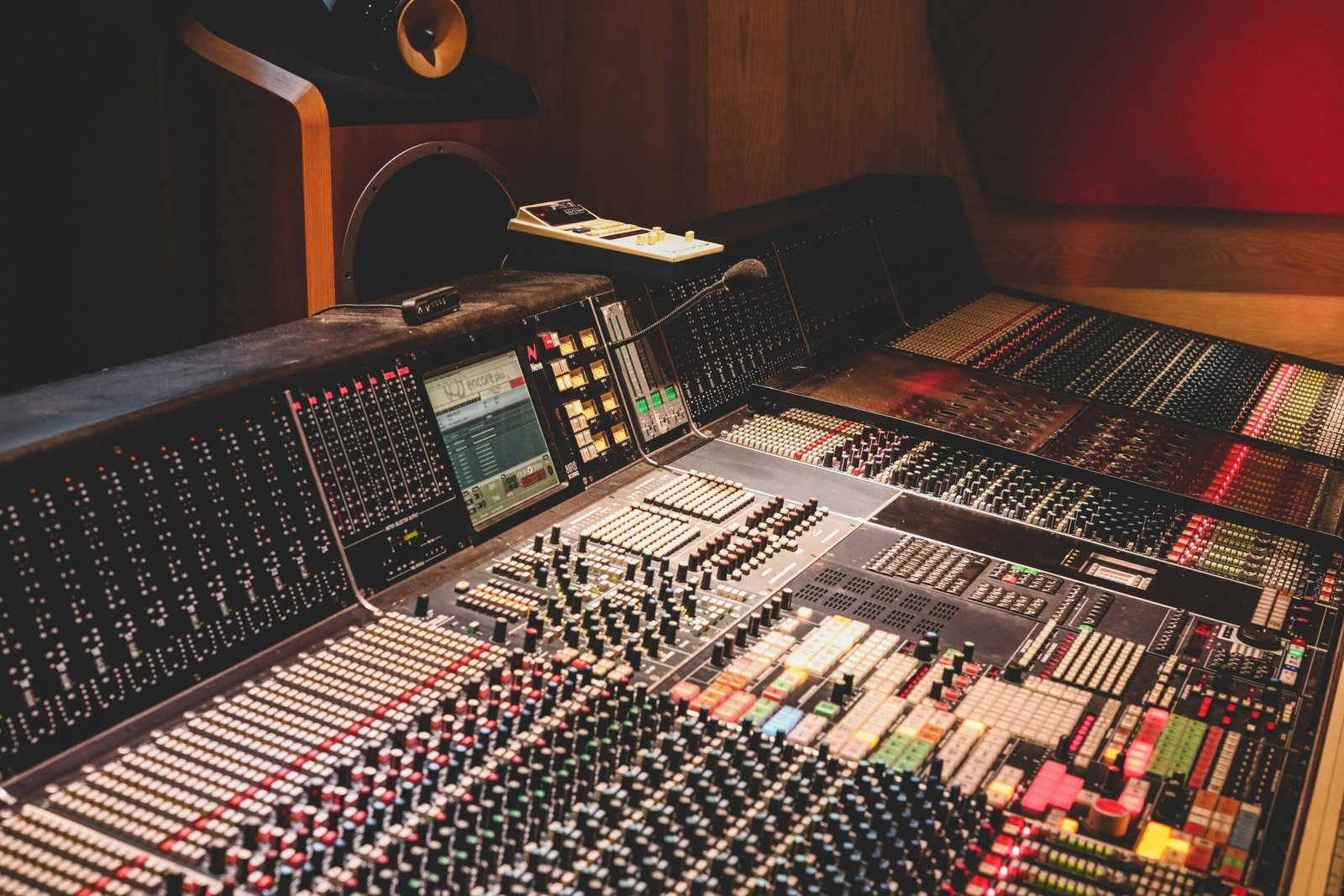
Understanding Your Needs and Budget
For me there’s nothing like writing a song and bringing it into the studio to record it. The process of creating a song from writing lyrics to coming up with a unique riff or melody and then getting it to the finish line in the studio with a final production is immensely fulfilling. It can be a time consuming process and if you have limited time as I do starting the process in your home studio can save you time and money. Before embarking on the journey of setting up a home recording studio, it is imperative to assess your specific recording needs and establish a budget that aligns with these requirements. The first step is to identify the type of music or audio content you aim to produce. Different genres may necessitate various equipment; for instance, electronic music might require synthesizers and MIDI controllers, whereas acoustic recordings necessitate high-quality microphones and soundproofing solutions. Due to my limited time I decided to buy the most simple cost effective equipment so I can start the writing process and record tracks as I go. I can leave the production and come back any time I want which helps take pressure off the process but it also gives me more time to work on specific tracks and to work on the production out without paying an hourly fee. After I work on the song and get my tracks down the way I want them I then take the tracks into a professional studio to have them produced and engineered by a professional. This is a great strategy as it helps me work on my song when it’s convenient and enables me to spend more time on the production while keeping the costs down.
Essential Audio Interfaces and Microphones
I think the audio interface is one of the most important purchases for your home studio. An audio interface serves as the connector between your microphones, instruments, and your computer, converting analog signals into digital data for recording and playback. It enhances sound quality, reducing latency and allowing for greater flexibility in capturing audio. When choosing an audio interface, consider the number of inputs and outputs, as well as the quality of the preamps, which affect the clarity and detail of your recordings. Budget-friendly options such as the Focusrite Scarlett series or the PreSonus AudioBox are highly recommended for beginners.
- The artist’s interface Set up mics for voice and guitar and plug into 2i2’s 4th-Generation preamps – Scarlett’s clearest…
- Find your signature sound For standout lead vocal and instrument tracks, Scarlett’s re-engineered Air mode takes your so…
- Let Scarlett set your levels Scarlett’s Dynamic Gain Halos make setting your levels quick and easy with any mic – or jus…
- Everything you need to record and produce at home in a single purchase.
- Rugged AudioBox USB 96 audio/MIDI interface for recording vocals and instruments.
- HD7 headphones let you mix, monitor, and produce without bothering your roommates.
Microphones play an equally significant role in shaping the audio quality of your recordings. Different types of microphones serve varied purposes, resulting in diverse sound profiles. Dynamic microphones are particularly robust and effective for live sound applications and miking loud sources like drums and guitar amplifiers. Conversely, condenser microphones excel in studio settings, offering superior sensitivity and broader frequency response, which makes them ideal for capturing vocals and intricate instrumental details. Furthermore, for specialized applications, ribbon microphones are prized for their warm tones and smooth frequency response, though they may require cautious handling.
For home studio enthusiasts, investing in a versatile condenser microphone such as the Audio-Technica AT2020 can provide excellent results across various recording situations, from vocals to acoustic instruments. Conversely, the Shure SM57 dynamic microphone offers a budget-friendly yet high-performing solution for miking instruments or spoken word scenarios. Ultimately, the combination of a solid audio interface and the right microphones tailored to your recording needs is crucial for achieving professional-quality sound in your home studio setup.
- This Certified Refurbished product is tested and certified to look and work like new. The refurbishing process includes …
- The price/performance standard in side-address studio condenser microphone technology
- Ideal for project/home-studio applications
- Contoured frequency response for clean, instrumental reproduction and rich vocal pickup
- Professional-quality reproduction for drum, percussion, and instrument amplifier miking
- Uniform cardioid pickup pattern isolates the main sound source while reducing background noise
Monitoring Equipment: Headphones and Studio Monitors
To achieve a professional sound in your home recording studio, investing in high-quality monitoring equipment is essential. This encompasses both studio monitors and headphones, which serve different purposes in the mixing and tracking processes. Studio monitors are specifically designed for professional audio production, offering a flat frequency response that is crucial for accurate mixing. Unlike consumer speakers, which often enhance specific frequencies to create a pleasing sound, studio monitors provide a true representation of your audio. This characteristic allows for better decision-making during the mixing and mastering phases of production.
When selecting studio monitors, it is important to consider your budget and space. There are various models that cater to different price ranges while maintaining a reliable performance. For budget-conscious producers, options like the KRK Rokit series provide great sound quality at an affordable price. If your budget allows for a higher investment, the Yamaha HS series is renowned for its exceptional clarity and accuracy. These monitors will help you identify subtle nuances in your mixes, ensuring that your final product translates well to other listening environments.
High-quality headphones are also crucial for tracking and mixing. They allow you to hear details that may not be audible through studio monitors, particularly in noisy environments. Headphones generally fall into two categories: open-back and closed-back. Open-back headphones, such as the Sennheiser HD 600, offer a wider soundstage, making them ideal for mixing. Conversely, closed-back headphones like the Audio-Technica ATH-M50x provide isolation, which is beneficial during tracking sessions. Investing in both good studio monitors and headphones will create a well-rounded monitoring setup, ultimately elevating the quality of your recordings.
- Lightweight aluminum voice coils ensure excellent transient response.Specific uses for product : Professional
- Neodymium ferrous magnets maintain optimum sensitivity and excellent dynamics
- Sophisticated design, elegantly finished in black and gray
Recording Software: The Digital Heart of Your Studio
Setting up a home recording studio requires more than just microphones and audio interfaces; the choice of recording software—and particularly Digital Audio Workstations (DAWs)—plays a crucial role in shaping your audio production environment. DAWs serve as the digital heart of your studio, enabling users to record, edit, and mix audio tracks with ease. Popular DAWs such as Logic Pro, Ableton Live, and Pro Tools cater to a range of skill levels, from beginner enthusiasts to advanced audio engineers.
Logic Pro, exclusive to macOS, is favored for its intuitive interface and comprehensive suite of built-in instruments and effects, making it an excellent choice for music production. However, it comes with a higher price tag, which may deter beginners. On the other hand, Ableton Live is celebrated for its versatile workflow, especially suited for electronic music creation and live performances. Its Session View allows for unparalleled improvisation, though some users might find its learning curve steeper initially. Pro Tools, often considered the industry standard, excels in audio editing and is prevalent in professional studios; however, it can be complex and may require significant investment.







